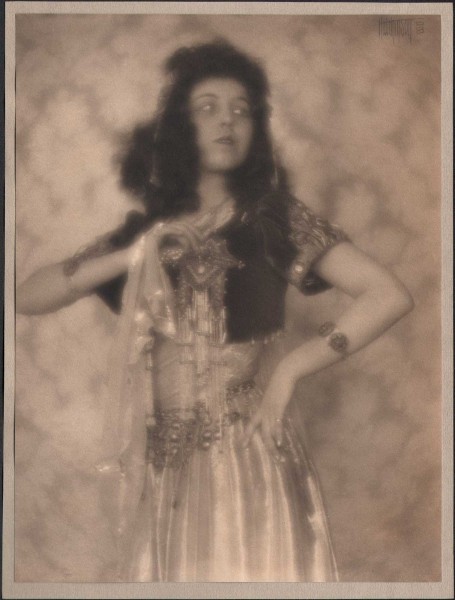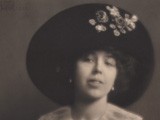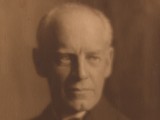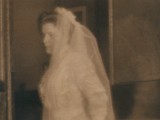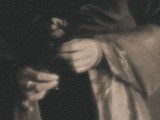Dancer Marjorie Chisholm
PhotographerEugene R. Hutchinson
CountryUnited States
MediumPlatinum
Year1908
View Additional Information & Tags
Dance, Fashion, Portrait: Woman, The Orient
Dimensions
Image Dimensions: 24.3 x 18.2 cm
Support Dimensions: 25.6 x 19.2 cm thin laid-paper art paper
Our Girls Salome Mad: Now Study Oriental Dancing in Paris Instead of Painting or Music-The New York Times: October 11, 1908
Chicago socialite Marjorie Chisholm (1887-1967) was 21 years of age when her name was attached to a 1908 Paris dateline published in the New York Times concerning the fad of Salome style dancing. Popularized by veil dances (“seven veils”) first inspired by playwright Oscar Wilde’s 1891 French tragedy Salome, these dances were essentially “westernized versions of imagined Middle Eastern styles of dance.” (Wiki) The article notes that Chisolm, accompanied by her mother and sister in Paris, was studying the Salome fad with Mme. Marraquita, ballet mistress of the Opéra Comique there, and “is so enthusiastic over the progress she has made that she intends to stay at least another month before returning to Chicago.”
Meanwhile, earlier that summer back in the Windy City, photographer Eugene Raymond Hutchinson (1880 –1957) had already immortalized Miss Chisholm for a series of dance photos and accompanying article which appeared in the style section of The Chicago Sunday Tribune of August 9th, 1908. Wearing the same Middle-Eastern inspired dance costume seen in this classically stylized pictorial portrait by Hutchinson, a series of three full-length poses of the dancer by him appeared under the headline: Chicago Women Who Could Dance to Fame if They Wanted To.
Miss Marjorie Chisholm a Tireless Dancer
With Marjorie Chisholm dancing is a passion. She has danced, so her friends say,ever since she was old enough to toddle about. She is brimful of energy and never grows tired while the music is playing. Whenever there Is a dance in contemplation, Miss Chisholm is the first one to be consulted, for it is known that any dance in which she takes an Interest is sure to be a success.
Miss Chisholm does not confine herself to any especial line of dancing. She can dance any way, at any time and all the time. She is always among the most sought after in the ball room and her fancy dancing is rarely excelled. She knows all sorts of fancy dances, quaint, dashing, daring and simple. There Is about her manner a youthful swing and enjoyment which captivates instantly. She has never known the curse of self-consciousness. Her manner is entirely free from any taint of this. She is herself and happy when she is dancing,as much so when she is engaged in a fancy dance and the center of interest as when she is waltzing in the perfume laden atmosphere of the crowded ball room.
“If ever I have to go to work,” says Miss Chisholm with all seriousness, “I shall know of at least one thing that I can do well. While I never have tried to teach dancing, I am sure that I could do it. It Is so simple to me that I know I could make it seem simple to others. I know that I can dance and there is a lot in having confidence in oneself, don’t you think so?” (1.)
Family background: Marjorie Chisholm
Her father was Samuel Sidney Chisholm, (born Ontario, Canada: 1841-1901) believed to be an industrialist who manufactured excavating equipment in Chicago but who died in New York City. Her mother was Rosepha Blanche (Pratt) Chisholm. (1857-1935)
Marjorie had an older sister, Rosepha P. Chisholm; (1886-1970) an older brother Sidney L. Chisholm; (b. 1885) and a younger brother: Donald Chisholm. (b. 1892) Rosepha, Marjorie’s older sister, was described in one 1918 account as an authority on publicity stunts, advertising methods and poster advertising, and was at the time treasurer of the Phoenix News Publicity Bureau headquartered in New York City. A Broadway database additionally lists her that year as a performer in the play Electra.
Marjorie’s husband, at least later in life, whom she is buried with along with her mother and older sister at Marshfield Hills Cemetery in Massachusetts, was Almeron Whitehead “Barry” Bacon. (1870-1936: “A. Barry Bacon” & Marjorie C. Bacon on gravestone) One year before his death, Bacon was elected president of the mother church, First Church of Christ Scientist of Boston. His career had been spent as the oriental rug buyer for Boston’s Chandler & Co. (in business since 1817) during the early 1910’s. He went on to become a director there in the 1920’s, and in 1930, the firm’s president upon the death of his brother Charles.
print notes recto: signed HUTCHINSON 08 in upper right corner
print notes verso: secondary mount lacking, with corner adhesive remnants
1. The Chicago Sunday Tribune, August 8, 1908:Part Seven:Special Features section
